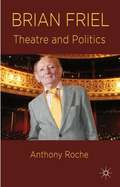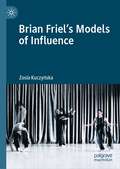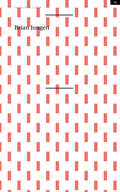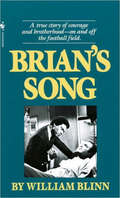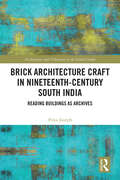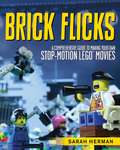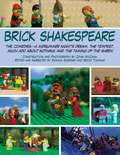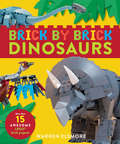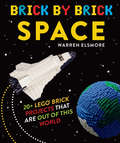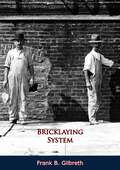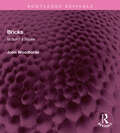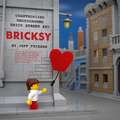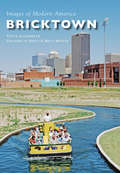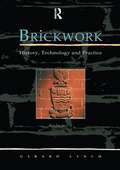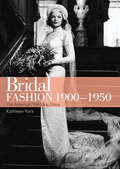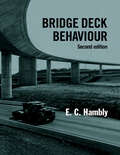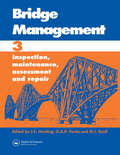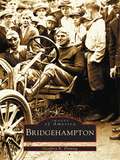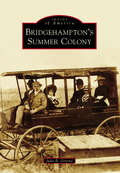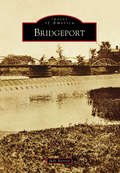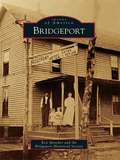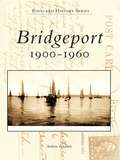- Table View
- List View
Brian Friel
by Anthony RocheFriel is recognised as Ireland's leading playwright and due to the ability of plays like Translations and Dancing at Lughnasa to translate into other cultures he has made a major impact on world theatre. This study draws on the Friel Archive to deepen our understanding of how his plays were developed.
Brian Friel's Models of Influence
by Zosia KuczyńskaThe Brian Friel Papers at the National Library of Ireland are a record of a life’s work in progress. They represent a way of working and of making art over a period spanning more than fifty years. This book is the first of its kind in its attempt to interrogate the role of the Brian Friel Papers in Friel’s legacy as a working artist with a richly developed creative practice. By means of an unprecedented focus on Friel’s artistic process, Kuczyńska asks not only how and by whom Friel was being influenced and inspired, but also how and for whom Friel’s praxis might come to be an inspiration. Combining forensic archival scholarship with original, collaborative practice-based research, this study remains focused on the ‘how’ of influence, showcasing an approach to literary archives that foregrounds live practices of access in the spirit of creative encounter. Whether uncovering forgotten source materials for Friel’s plays or working with current practitioners in the arts, Kuczyńska reveals how an approach to literary archives grounded in artistic practice might provide the tools for setting a major creative legacy not in stone but rather in motion.
Brian Jungen
by Clint Burnham Zoë Gray Brian Jungen Solange De Boer Homi BhabhaPublication initially published in print on the occasion of the exhibition Brian Jungen at Witte de With, 2 Dec 2006 to 11 Feb 2007.
Brian Jungen
by Clint Burnham Zoë Gray Brian Jungen Solange De Boer Homi BhabhaPublication initially published in print on the occasion of the exhibition Brian Jungen at Witte de With, 2 Dec 2006 to 11 Feb 2007.
Brian's Song
by William BlinnTwo men. One named Gale Sayers, the other Brian Piccolo. They came from different parts of the country. They competed fiercely for the same job. One liked to talk; the other was shy. One was white; the other black. This is the story of how they came to know each other, fight each other, and help each other
Brick Architecture Craft in Nineteenth-Century South India: Reading Buildings as Archives (Architecture and Urbanism in the Global South)
by Priya JosephThis book explores brick architecture of the nineteenth century in South India, through the lens of tectonics and materiality. The book is a diachronically elaborated history of brick architecture, especially analysing the hybridity due to the indigenous and colonial intersections of nineteenth-century India. It offers a decolonial reading of architecture through meticulous measured drawings as a tool and presents an argument for reading buildings as archives.South India has thousands of dilapidated buildings, which may be erased due to neglect, laxed laws and ignorance. The book exposes the tectonics, fixing, material choices, socio-political circumstances of this architecture in brick. This method of analysing the dilapidated buildings as an archive of construction, forefronts the ‘makers’ and the agency of the local craftspeople rather than an Anglo-centric gaze. Brick buildings such as the extravagantly ornamental and structurally rich Chatrams of Thanjavur, Rosary Church, Hassan and Fort School, Bengaluru, are some of the many cases elaborated in the book. The book connects the history of brick to its many contemporary challenges and manifestations.The book is intended for students and scholars of architecture, history, material-culture, colonial studies and the Global South as well as anyone interested in brick as material for architecture.
Brick Flicks: A Comprehensive Guide to Making Your Own Stop-Motion LEGO Movies
by Sarah HermanTurn your bricks into blockbusters with this movie-making guide! You've seen the smash-hit film; now it's time to step into the director's chair and make your own. Forget big budgets, A-list movie stars, and exotic locations-this comprehensive guide will show you how to make a stop-motion movie using little more than a camera, a computer, and your own LEGO collection.From picking out the right gear, planning a story, and setting up shots, to animating minifigures, editing, and promoting your film online, Brick Flicks has enough tips and tricks to turn a popcorn prentice and into an Oscar-worthy wizard. Along with a brief history of Brickfilms, official LEGO shows, movies, and associated products, and a wealth of knowledge and expertise from some of the most popular Brickfilms producers out there, this is a must-have purchase for any budding directors, young or old, who want to turn their box of bricks into flicks.
Brick Science: STEM Tips and Tricks for Experimenting with Your LEGO Bricks—30 Fun Projects for Kids!
by Jacquie FisherBuild your way through thirty fantastic STEM experiments, brick by brick! Fun projects that are perfect for fans of LEGO Masters and science subjects! Does your young scientist love LEGOs? Then this is the book for them! Contained within these pages is an assortment of experiments and activities to teach your child all about Science and STEM subjects using LEGO bricks. In Brick Science, various aspects of STEM will be introduced to your creative learner through over thirty exciting and innovative ways of using LEGO bricks. Your child will be exposed to important lessons about chemistry, paleontology, the animal kingdom, and more, all while thinking that they&’re just playing with LEGOs! This fun-filled book contains experiments and ideas for exploring subjects, such as: BiologyChemistryDinosaursEarth SciencePhysicsSpaceWeatherAnd More! The lessons that your child will learn from these experiments will stick with them for years to come, encouraging them to learn, explore, and one day possibly become a scientist themselves. With Brick Science, both you and your young LEGO-lover will be excited to learn about science, nature, and the world around us!
Brick Shakespeare: The Comedies - A Midsummer Night's Dream, The Tempest, Much Ado About Nothing, and The Taming of the Shrew
by Becky Thomas Monica Sweeney John McCannExplore four of Shakespeare’s comedies like never before-with LEGO bricks! This book presents Shakespeare’s most delightful comedies, A Midsummer Night’s Dream, Much Ado About Nothing, The Taming of the Shrew, and The Tempest, in one thousand amazing color photographs. This unique adaptation of the world’s most famous plays stays true to Shakespeare’s original text, while giving audiences an exciting new perspective as the stories are retold with the universally beloved construction toy.Get caught up in hilarious misadventures as brick Puck leads the lovers astray through the brick forests of Athens. Watch Cupid kill with traps in the plot to marry Beatrice and Benedict. Marvel at the changing disguises of the men vying for brick Bianca’s affections, and feel the churn of the ocean as Prospero sinks his brother’s ship into the brick sea. These iconic stories jump off the page with fun, creative sets built brick by brick, scene by scene!This incredible method of storytelling gives new life to Shakespeare’s masterpieces. With an abridged form that maintains original Shakespearean language and modern visuals, this ode to the Bard is sure to please all audiences, from the most versed Shakespeare enthusiasts to young students and newcomers alike!
Brick by Brick Dinosaurs: More Than 15 Awesome LEGO Brick Projects
by Warren ElsmoreFrom a master LEGO builder comes seventeen easy-to-build dinosaur projects using nothing but LEGO bricks!What's better than dinosaurs or building with LEGO bricks? Building amazing dinosaur projects out of your LEGO bricks, of course! Brick by Brick Dinosaurs provides more than fifteen amazing projects to build with your LEGO bricks. Follow the easy step-by-step instructions to create favorites like the triceratops, stegosaurus, and brachiosaurus, as well as the super cool sarcosuchus, archaeopteryx, pteranodon, and more. Scattered throughout are fun and fascinating facts about dinosaurs and prehistoric times. This is a must-have book for anyone who loves dinosaurs or LEGO.
Brick by Brick Space: 20+ LEGO Brick Projects That Are Out of This World
by Warren ElsmoreFrom a master LEGO builder comes twenty easy-to-build space projects using nothing but LEGO bricks!What's better than space or building with LEGO bricks? Building amazing space projects out of your LEGO bricks, of course! Brick by Brick Space provides more than twenty-five amazing projects to build with your LEGO bricks. Follow the easy step-by-step instructions to create space stations, satellites, planets, rocket ships, and more. Scattered throughout are fun and fascinating facts about space exploration and the various objects that are orbiting our world. This is a must-have book for any space enthusiast or LEGO lover.
Brick x Brick: How to Build Amazing Things with 100-ish Bricks or Fewer
by Adam WardJoin the "Bob Ross of LEGO" in constructing cool creations with this how-to guide that brings legendary builds to life!Looking for something a little more exciting than your average LEGO® guide? You're in luck! Not only does this spectacular book offer step-by-step instructions for fun builds and crafts, it also includes intriguing trivia, micro challenges, and advice to boost your creative confidence. You'll also learn all about the author, Adam Ward, a professional artist who hosts the popular YouTube series Brick x Brick--and who wants you to become the best builder you can be. With a difficulty rating provided for each build, this is the perfect pick for LEGO® lovers of every skill-level. Get ready to make a masterpiece!
Bricklaying System
by Frank B. GilbrethFrank Gilbreth’s book “Brick Laying System” has been a classic in its field but long out of print since its first publication in 1909. “Chapters include Training Apprentices in Bricklaying, Methods of Management, Methods of Construction, Routing of Material, Scaffolds, The Gilbreth Scaffold, The Gilbreth Packet System, Building Tall Chimneys, Mortar, Bricks, Bricklayers' Tools, Lines, Plumbs and Poles, Methods of Laying Brick Under Special Conditions, Finishing, Jointing and Pointing, Arches and Chimney Breasts, Tearing Down, Cutting Out and Patching Brickwork, Bond and more. A real treasury of information on brick laying, the history of brick laying and utilizing bricks in construction by a master bricklayer.”-Print ed.
Bricks: to build a house (Routledge Revivals)
by John WoodfordeFirst published in 1976, Bricks tells the story of bricks in Britain. The story of the brick begins with the sun-dried, mud bricks formed with hands alone. Walls built with such bricks have been found in the ruins of Jericho – probably the oldest town in the world. John Woodforde describes bricks and brickmaking in the ancient world and in Europe and America; he gives a comprehensive account of brickmaking in Britain up to the 1970s. He describes the properties of bricks, including those of the unique fletton brick, manufactured by the London Brick Company. The author looks, too, at the equipment and techniques used to fashion bricks, the brickmakers themselves and brickwork of many kinds: in garden walls, sewers, canals, railways and roads as well as in Hampton Court and the Nash terraces of Regent’s Park. This book will be of interest to students of architecture, engineering, chemistry and construction.
Bricksy: Unauthorized Underground Brick Street Art
by Jeff FriesenFrom Jeff Friesen, award-winning photographer and author of United States of LEGO®, comes a hilarious new book of diorama photographs that uses LEGO bricks to spoof the famous work of the mysterious anonymous graffiti artist known as Banksy. Friesen gives new meaning to gritty street art using clean, modernist bricks. Bricksy goes beyond transforming the medium by expanding the scenes it plays on and adding a humorous twist to each one. Each of the eighty-four photographs is wittily captioned, delightful to look at, and appropriate for a wide range of ages. At the end of the book is a legend featuring thumbnail reproductions of each original Banksy so readers can test their knowledge of Banksy’s catalogue with Friesen’s LEGO spinoffs. While traditional street art is often rushed along by the threat of local law enforcement, Friesen has bountiful time to reimagine Banksy’s work into glossy LEGO glory that comes off the walls and springs to life. Banksy’s iconic characters gain intriguing new stories. Readers will discover where Banksy’s monkeys are taking charge and who the bouquet thrower’s star-crossed lover is. You’ve never seen Banksy like this before. You’ve never seen LEGO like this before. Bricksy is a must-have book for fans of Banksy, fans of LEGO, and anyone with a sense of humor.
Bricktown (Images of Modern America)
by Steve Lackmeyer Brent Brewer Brett BrewerBricktown, once an area reserved for federal troops, was given to Oklahoma City for development in 1898. Brick warehouses originally were built along rail lines to house wholesale operations, but a half century later, the district was abandoned as industry moved farther away from the urban core. The forgotten warehouse district was rediscovered by Neal Horton, who started the movement of transforming the area in 1979. Jim Brewer carried out Horton's vision, enabling Bricktown to become a regional destination where historic preservation and modern entertainment would merge. Excursion boats traverse a modern man-made recreational canal built in 1999 that flows between century-old brick warehouses. Bricktown's restaurants, shops, and attractions have hosted some of the biggest names in politics and entertainment. The transformation continues with the opening of The Criterion concert hall in 2016 and the construction of more retail space and restaurants, 400 apartments, and several hotels.
Brickwork: v.2
by Gerard C.J. LynchThis series of books offers an in depth guide to all aspects of brickwork and bricklaying practice. Gerard Lynch, author of the guide to "Guaged Brickwork", has put together these comprehensive and instructive volumes, linking past knowledge and practices with modern skills and materials, so that both can be fully examined and understood. At a time when the conservation and restoration of old buildings demand a more sympathetic handling, such a work should be a useful addition to the existing literature, and an essential source of reference for all those involved in the construction and repair of brick buildings. The second of six volumes which offer an in-depth guide to all aspects of brickwork and bricklaying practice, this volume examines the elements of building construction in brick. The text covers both the contemporary and traditional aspects of substructure brickwork. Chapter one studies the setting out of a small building, and then progresses to foundations, examining the historical, as well as current practices, along with information on modern concrete production. The following six chapters cover both the contemporary and traditional aspects of substructure brickwork, basements, sleeper walls, damp proof courses, cavity walling, and jointing and pointing. The volume concludes with useful advice on achieving controlled and efficient bricklaying.
Bridal Fashion 1900-1950
by Kathleen YorkFrom homespun to haute couture, the dresses worn by American brides in the first half of the twentieth century had myriad influences. In Bridal Fashion 1900-1950, living-history expert Kathleen York takes readers on an elegant journey back in time, marking the changes that economics, popular culture, and even politics have made to style over the years. Both brides-to-be looking for inspiration and nostalgia-seekers will enjoy this lavishly illustrated tour of an era that saw the average wedding evolve from a simple affair for a few family members into a dazzling, and often expensive, gala for hundreds of guests.
Bridge Deck Behaviour
by E C HamblyThis book describes the underlying behaviour of steel and concrete bridge decks. It shows how complex structures can be analysed with physical reasoning and relatively simple computer models and without complicated mathematics.
Bridge Management: Proceedings of the Third International Conference
by M. J. Ryall J. E. Harding G.E.R. ParkeThis volume contains the papers presented at the Third International Conference on Bridge Management, held at the University of Surrey, Guildford, UK on 14-17 April 1996.
Bridgehampton (Images of America)
by Geoffrey K. FlemingBridgehampton is a fascinating look at one of the prime resort areas on the South Fork of Long Island. The history of Bridgehampton was captured magnificently by studio and itinerant photographers whose work from the mid-1800s to the late 1900s is reflected here. These stunning images show people as they raised children, worked on the farm, worshiped, studied, socialized, and played. The faces show expressions of pride, joy, and, occasionally even boredom, providing a realistic portrayal of the past.
Bridgehampton's Summer Colony (Images of America)
by Julie B. GreeneThe hamlet of Bridgehampton was settled in 1656 and aptly named for the bridge that was built to connect the settlements of Mecox and Sagaponack. Ninety miles from New York City, this rural farming community was transformed by the arrival of the Long Island Rail Road in 1870. With the notion that salt air and sea breezes were the perfect relief from the hot and sweltering isle of Manhattan, wealthy New Yorkers made the sojourn to the pristine shores of the Atlantic Ocean. On a trip down Ocean Road toward the beach, one would pass the grand homes of a toy importer, a pen manufacturer, a coal industrialist, a merchant tailor, and an inventor--the established summer colony. The region quickly gained a reputation as a pleasant summer resort--a reputation that still thrives today.
Bridgeport
by Judy BarrettA truly unique hamlet, Bridgeport lies in both the towns of Cicero, in Onondaga County, and Sullivan, in Madison County. It is divided only by Chittenango Creek, which was the main attraction for settlement in the early years. Farms developed on the shores of Oneida Lake and the creek, while small industries sprang up in the hamlet near the creek rapids and along what later became Route 31. These businesses evolved to support the needs of the area. On the west side of the creek were a sawmill, which provided lumber for homes, and a tannery, which made leather for harnesses, boots, and shoes. On the east side, a blacksmith shop repaired wagons and shoed horses, while a cooper made barrels among other blossoming businesses. When a bridge and dam were built as a power supply, the hamlet was aptly named Bridgeport.
Bridgeport (Images of America)
by Bridgeport Historical Society Ken SprecherIn 1860, John Butterfield rerouted his famous stage line over the west fork of the Trinity River, and soon a small community sprang up along the banks near the new toll bridge. The settlement became known as Bridgeport, and its pioneers found themselves in the middle of both Texas and American history. Since then, Bridgeport's contributions to history have been achieved through the area's land, as well as the rich oil that flowed beneath the rugged, cactus-dotted country. Recognizing the importance of the earth and what lay below took the skill of entrepreneurs and the hard work of many people. The cast of pioneer characters included a young, well-educated New Yorker seeking adventure in the new republic, a stern but generous engineer from Pennsylvania, and a billionaire wildcatter from Houston. Not forgotten are the stories of immigrants from all over the world whose lives have enriched Bridgeport's historic past. Today Bridgeport continues to utilize natural resources while developing its local heritage and ecotourism sites.
Bridgeport: 1900-1960
by Andrew PehanickBridgeport: 1900-1960 presents a fascinating look into the history of Bridgeport through vintage postcards from the city's formative years. These vintage postcards depict the change and expansion in Bridgeport during the 20th century, from the growth of the University of Bridgeport from a small junior college into a major university to the changes in transportation from the horse and buggy to early automobiles and trolley cars. Bridgeport's waterfront played an important role in the development of the city, drawing visitors and wealthy residents who built homes along the shore. Following the two world wars, the city saw a large population increase, and a building boom soon followed. Factories and homes were built, retail stores moved in, and recreational options increased to serve the needs of the thousands of people who came to Bridgeport seeking employment.
